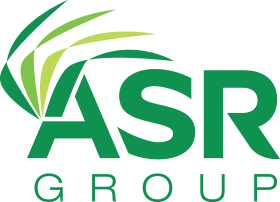USA
800 691 9120
UK
01225 704844
We use cookies on our website to analyze website usage and to help secure the website against misuse. Advertising and functional cookies are not used in our site or our web application products.
By clicking “Accept Essential Cookies Only”, you consent to us placing these cookies.
Asset accounting is the process of tracking and reporting on a company's assets, and is supported by xAssets Fixed Asset Management Software. This includes both tangible assets, such as equipment and buildings, and intangible assets, such as patents and trademarks. Depreciation is the process of allocating the cost of an asset over its useful life. This is done in order to match the expense of the asset with the revenue it generates.
There are a number of different asset accounting and depreciation strategies that a company can choose from. The optimal strategy will vary depending on the company's specific circumstances. However, there are a number of factors that companies should consider when choosing an asset accounting and depreciation strategy, such as:
In this blog post, we will discuss the optimal asset accounting and depreciation strategies for companies in the European Union (EU), the United Kingdom (UK), the United States (US), and Canada.
Depreciation is permitted for assets that are in use and generating income for the business.
Depending on jurisdiction and the purposes of the book within which depreciation is being calculated, there may be circumstances where depreciation is allowed on an asset that is no longer in service or has been disposed of. For example, if an asset is destroyed or becomes obsolete before the end of its useful life, the business may be able to take a partial or full write-off of the remaining book value of the asset.
Similarly, if an asset is sold or disposed of before the end of its useful life, the business may be able to take a partial write-off of the remaining book value of the asset. This is known as a loss on disposal, and it represents the difference between the net book value of the asset (i.e., the original cost of the asset minus accumulated depreciation) and the proceeds received from its sale or disposal.
In some cases, the business may be able to continue depreciating an asset that is no longer in service if it is still held for productive use or held for sale. This can occur, for example, if the business has a large inventory of assets that are not currently being used, but are expected to be put back into service at some point in the future.
In the EU, companies adhere to the International Financial Reporting Standards (IFRS). This standard requires companies to use the straight-line method to calculate depreciation for financial reporting purposes. However, companies can choose to use an accelerated depreciation method for tax purposes. We recommend using a dual book system to manage asset accounting and depreciation calculation in the EU. This system involves maintaining two sets of books, one for financial reporting and one for tax purposes.
In the UK, companies follow the Generally Accepted Accounting Principles (GAAP) when calculating depreciation for financial reporting purposes. GAAP requires companies to use the straight-line method or the declining balance method. However, for tax purposes, companies can use an accelerated depreciation method. We recommend using a three-book system to manage asset accounting and depreciation calculation in the UK. This system involves maintaining three sets of books, one for financial reporting, one for tax purposes, and one for capital gains tax.
If needed, UK companies can represent assets in both these forms by using separate books for IFRS and UK GAAP
In the USA, companies adhere to the Generally Accepted Accounting Principles (GAAP) for financial reporting and the tax code for tax purposes. GAAP requires companies to use the straight-line method or the accelerated method, such as MACRS (Modified Accelerated Cost Recovery System) or ACRS (Accelerated Cost Recovery System). MACRS and ACRS are methods used for tax purposes to calculate depreciation over a shorter period, which results in larger depreciation deductions. We recommend using a four-book system to manage asset accounting and depreciation calculation in the USA. This system involves maintaining four sets of books, one for financial reporting, one for tax purposes, one for MACRS, and one for ACRS.
In Canada, companies adhere to the Canadian Generally Accepted Accounting Principles (GAAP) for financial reporting and the Income Tax Act for tax purposes. GAAP requires companies to use the straight-line method or the declining balance method. For tax purposes, companies can use the declining balance method or the capital cost allowance (CCA) method. We recommend using a dual book system to manage asset accounting and depreciation calculation in Canada. This system involves maintaining two sets of books, one for financial reporting and one for tax purposes.
Under Canadian GAAP, intangible assets are amortized over their useful life, while under IFRS, intangible assets are not amortized unless their value declines. This difference can have a significant impact on the financial statements of a company, as it can affect the amount of depreciation expense that is recorded each year.
Under Canadian GAAP, goodwill is amortized over a period of up to 20 years, while under IFRS, goodwill must be tested for impairment at least annually. This difference can also have a significant impact on the financial statements of a company, as it can affect the amount of goodwill impairment expense that is recorded each year.
Canadian GAAP and IFRS differ in the way that financial instruments are accounted for. Under Canadian GAAP, financial instruments are classified as either debt or equity, while under IFRS, financial instruments are classified into a number of different categories, each with its own specific accounting treatment. This difference can also have a significant impact on the financial statements of a company, as it can affect the amount of interest expense or income that is recorded each year.
Salvage value is the estimated value of an asset at the end of its useful life. In asset accounting, salvage value is used to determine the depreciation of an asset - i.e. we start depreciating at the original value of the asset, and we stop when the salvage value is reached, so a straight line depreciation formula might look like this:
(OriginalValue - SalvageValue) / RecoveryPeriod
The above calculates the depreciation to be placed on each asset on a monthly basis, and recovery period represents the number of months of useful life of the asset. By taking into account the salvage value, the depreciation expense can be calculated more accurately.
Asset purchases are recorded on the balance sheet. The cost of the asset is then allocated over its useful life using a depreciation method such as the straight line method shown above. This depreciation expense is recorded on the income statement, reducing profit and increasing expenses. When the asset reaches the end of its useful life, the remaining value of the asset, which is the salvage value, is subtracted from the original cost to determine the total amount of depreciation expense for the life of the asset.
Salvage value also influences the book value of an asset. The book value of an asset is the original cost minus the accumulated depreciation. When an asset reaches the end of its useful life, the book value is equal to the salvage value. At this point, the asset is considered fully depreciated, and it is removed from the balance sheet.
It's important to note that the use of salvage value in asset accounting and depreciation calculations can vary depending on the specific accounting standards and regulations in a particular country or region. In some cases, the salvage value may be required to be estimated and updated periodically to ensure accurate financial reporting.
xAssets was designed from the ground up to cover large enterprise asset accounting needs. This includes:
Exchange rates are automatically loaded daily, weekly or monthly from a bank website API feed.
Unusual accounting periods are supported, such as 5,5,4, 13 week quarters, seasonal quarters and non-calendar year periods. Each accounting period is a database record with a start date and end date, so any scenario can be represented by our data model. If you have two companies with different nominal ledgers, different year ends, or different accounting periods, xAssets can represent these companies correctly within a single database instance.
There is no limit to the number of companies, books or currencies you can use in the system, so many representations of the same asset are possible, and books can support multiple jurisdictions against an asset or its children
Companies who are changing their year end dates can use the software to represent those accounting periods correctly and report on short years as expected.
xAssets also allows you to model depreciation formulae on a trial basis to see how they would affect assets.
Some examples of the depreciation formulae we can represent in xAssets include:
| Depreciation Type | Sql Formula |
|---|---|
| Standard 20% Declining Balance |
0.2 * (NetBookValue - SalvageValue) * (DepreciableDaysInExistence / DaysInYear)
|
| No Depreciation | 0 |
| Straight Line over Recovery Period |
(OriginalValue - SalvageValue) / RecoveryPeriod
|
| Standard Depreciation at 25% per annum |
0.25 * OriginalValue * DepreciableDays / DaysInYear
|
| GDS Tables |
Lookup() * BusinessUseFactor * InServiceFlag * Basis / DepreciablePeriodsInServiceInYear
|
| GDS 200% DB Half Year Calculated |
2 * (PeriodsInFy / RecoveryPeriod) * HalfYearFactor * BusinessUseFactor * BasisDepreciated / DepreciablePeriodsInServiceInYear
|
| GDS 200% DB Mid Quarter Calculated |
2 * (PeriodsInFy / RecoveryPeriod) * MidQuarterFactor * BusinessUseFactor * BasisDepreciated / (DepreciablePeriodsInServiceInQuarter * 4)
|
| GDS 200% DB Mid Month Calculated |
2 * (PeriodsInFy / RecoveryPeriod) * MidMonthFactor * BusinessUseFactor * BasisDepreciated / DepreciablePeriodsInServiceInYear
|
| Straight Line Daily |
(DepreciableDaysInExistence / DaysInPeriod) * (OriginalValue - SalvageValue) / RecoveryPeriod
|
| Straight Line Daily In Service |
(DepreciableDaysInService / DaysInPeriod) * (OriginalValue - SalvageValue) / RecoveryPeriod
|
| Straight Line Half Year |
(PeriodsInFy / RecoveryPeriod) * HalfYearFactor * BusinessUseFactor * Basis / DepreciablePeriodsInServiceInYear
|
| Sum of Years Digits |
(OriginalValue - SalvageValue) * InServiceFlag * (RecoveryPeriod / 12 - YearsInService) / (12 * (RecoveryPeriod / 12) * ((RecoveryPeriod / 12) + 1) / 2)
|
| Straight Line Mid Quarter |
(PeriodsInFy / RecoveryPeriod) * MidQuarterFactor * BusinessUseFactor * Basis / (DepreciablePeriodsInServiceInQuarter * 4)
|
| Straight Line Whole Month |
(DepreciableDaysWholeMonth / DaysInPeriod) * BusinessUseFactor * Basis / RecoveryPeriod
|
| Straight Line Mid Month |
MidMonthFactor * BusinessUseFactor * Basis / RecoveryPeriod
|
| Lease Amorization - Straight Line |
Basis / RecoveryPeriod
|
| Whole Year Straight Line |
FirstPeriodInFYFlag * Basis * PeriodsInYear / (RecoveryPeriod)
|
| Straight Line Half Year with Disposal |
Option:IgnoreNetBookValueInMonthOfDisposal |
Case When DisposedThisPeriodFlag = 1 Then ((PeriodsInFy / RecoveryPeriod) * HalfYearFactor * BusinessUseFactor * Basis) - AccumulatedDepreciationThisYear Else (PeriodsInFy / RecoveryPeriod) * HalfYearFactor * BusinessUseFactor * Basis / DepreciablePeriodsInServiceInYear End
|
xAssets also supports Construction in Progress (CIP) and Bill of Materials (BOM), however those topics are outside the scope of this article.
Proper asset accounting and depreciation calculation are crucial for accurate financial reporting and maximizing profits. xAssets makes it easy for companies to choose an optimal strategy for asset accounting and depreciation calculation. In the EU, UK, USA, and Canada, we recommend using different book systems to ensure accurate financial reporting and tax compliance.
Free instances are free forever and can show demo data or your data.































